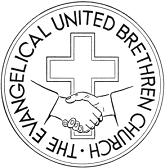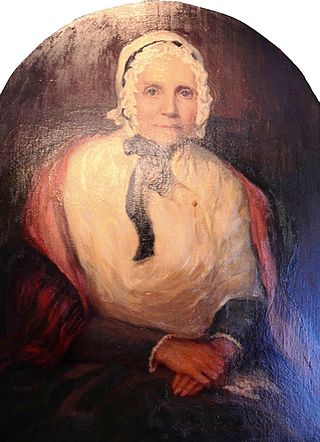Related Research Articles

Grinnell College is a private liberal arts college in Grinnell, Iowa, United States. It was founded in 1846 when a group of New England Congregationalists established Iowa College. It has an open curriculum, which means students need not follow a prescribed list of classes. The college's 120-acre campus includes several listings on the National Register of Historic Places.

Grinnell is a city in Poweshiek County, Iowa, United States. The population was 9,564 at the time of the 2020 census. It is best known for being the home of Grinnell College, as well as being the location of the Merchants' National Bank building, designed by famous architect Louis Sullivan.

The Evangelical United Brethren Church (EUB) was a North American Protestant denomination from 1946 to 1968 with Arminian theology, roots in the Mennonite and German Reformed, and communities, and close ties to Methodism. It was formed by the merger of the Evangelical Church and the Church of the United Brethren in Christ. The United Brethren and the Evangelical Association had considered merging off and on since the early 19th century because of their common emphasis on holiness and evangelism and their common German heritage. In 1968, the United States section of the EUB merged with the Methodist Church to form the United Methodist Church, while the Canadian section joined the United Church of Canada.

Lorenzo Snow was an American religious leader who served as the fifth president of the Church of Jesus Christ of Latter-day Saints from 1898 until his death. Snow was the last president of the LDS Church in the 19th century and the first in the 20th.

Andover Theological Seminary (1807–1965) was a Congregationalist seminary founded in 1807 and originally located in Andover, Massachusetts on the campus of Phillips Academy.

Lucy Mack Smith was the mother of Joseph Smith, founder of the Latter Day Saint movement. She is noted for writing the memoir, Biographical Sketches of Joseph Smith, the Prophet, and His Progenitors for Many Generations and was an important leader of the movement during Joseph's life.

Don Alden Adams was president of the Watch Tower Bible and Tract Society of Pennsylvania (2000–2014), the principal corporation of Jehovah's Witnesses.

William Salter was an American congregational minister, public orator, social activist and historian.

Orson Spencer was a prolific writer and prominent member of the Church of Jesus Christ of Latter-day Saints. He served in several highly visible positions within the church and left an extensive legacy of theological writings. Orson Spencer is one of the examples William Mulder cites of highly educated people becoming Mormons during the time of Joseph Smith
Erastus is a masculine given name which may refer to:
The American Baptist Home Mission Society is a Christian missionary society. Its main predecessor the Home Mission Society was established in New York City in 1832 to operate in the American frontier, with the stated mission "to preach the Gospel, establish churches and give support and ministry to the unchurched and destitute." In the 19th century, the Society was related to the Triennial Convention of Baptists. Today it is part of that Convention's successor, the American Baptist Churches, USA, and is the successor by merger of several 19th century Baptist organizations related to missions and education, including publications (1824), women (1877), and education (1888)

Shadrach Roundy was an early Latter Day Saint leader born in Rockingham, Vermont. Roundy was the second oldest (59) member of Brigham Young's Company, which arrived in the Salt Lake Valley in 1847, and was one of the advance party which arrived in the valley ahead of the main party in order to start planting crops. He was one of the three men who, on July 23, 1847, were the first Mormon pioneers recorded to plow soil in what became Utah. He is also mentioned in Doctrine and Covenants 124:141 and was a bodyguard of Joseph Smith.

The Episcopal Diocese of Nebraska is the diocese of the Episcopal Church in the United States of America with jurisdiction over the state of Nebraska. It is in Province VI. Its cathedral, Trinity Episcopal Cathedral, is in Omaha, as are the diocese's offices. As of 2019, the diocese contains 52 congregations and 7,096 members. Average Sunday attendance is approximately 2,418 across the diocese.
Reuben Gaylord was the recognized leader of the missionary pioneers in the Nebraska Territory, and has been called the "father of Congregationalism in Nebraska." Writing in memory of Gaylord in the early 1900s, fellow Omaha pioneer George L. Miller said, "It was Reuben Gaylord, the brave Christian soldier who brought Sunday into Omaha and the Trans-Missouri country.

Henry Carter Adams was a U.S. economist and Professor of Political Economy and finance at the University of Michigan.

Ralph Leo Hayes S.T.D. was an American prelate of the Roman Catholic Church. He served as the fourth bishop of the Diocese of Helena in Montana from 1933 to 1935, and as the fifth bishop of the Diocese of Davenport in Iowa from 1944 to 1966.
In the theology of the Latter Day Saint movement, an endowment refers to a gift of "power from on high", typically associated with the ordinances performed in Latter Day Saint temples. The purpose and meaning of the endowment varied during the life of movement founder Joseph Smith. The term has referred to many such gifts of heavenly power, including the confirmation ritual, the institution of the High Priesthood in 1831, events and rituals occurring in the Kirtland Temple in the mid-1830s, and an elaborate ritual performed in the Nauvoo Temple in the 1840s.
The Alabama Baptist Convention is an autonomous association of Baptist churches in the U.S. state of Alabama formed in 1823. It is one of the state conventions associated with the Southern/Great Commission Baptists.

George Edward White was an American Congregationalist missionary for the American Board of Commissioners for Foreign Missions for forty-three years. Stationed in the Ottoman Empire during the Armenian genocide as President of the Anatolia College in Merzifon, White attempted to save the lives of many Armenians, including "refused to tell" where Armenians were hiding so to save them from getting deported or killed. Thus he became an important witness to the Armenian Genocide.
References
- ↑ "Gale Catalog - the American Home Missionary Society Papers, 1816-1894 - 222182". Archived from the original on 2011-07-14. Retrieved 2010-02-11.
- 1 2 3 "Protestantism in America: A Narrative History". Archived from the original on 2010-06-25. Retrieved 2010-02-11.
- ↑ "History of the Pioneer Fund - Development | Grinnell College". Archived from the original on 2010-05-28. Retrieved 2010-02-11.
- 1 2 "The Baptist Church History in Northeastern Iowa, 1886, Part II". iagenweb.org.
- ↑ Nollen, John Scholte (1953). Grinnell College. State Historical Society of Iowa. pp. 227–230. Retrieved 2016-02-18.
- The Twenty-Eighth Annual Meeting of the Mississippi Valley Historical Association: Elmer Ellis, The Mississippi Valley Historical Review, Vol. 22, No. 2 (Sep., 1935), pp. 231–250
- The Palimpsest, Vol. XV, June 1934, No. 6
- Iowa Historical Record, Vol. X, July 1894, No. 3.
- Annals of Iowa, Vol. VI, January 1904, No. 4
- Frontier Church going — 1837, George C. Duffield, Jan 1904
- Annals of Iowa, Vol. XII, Iowa City, April 1920, No. 4,
- The Iowa Band, Ephraim Adams, 1870
- The Iowa Band in The Encyclopedia of Evangelicalism